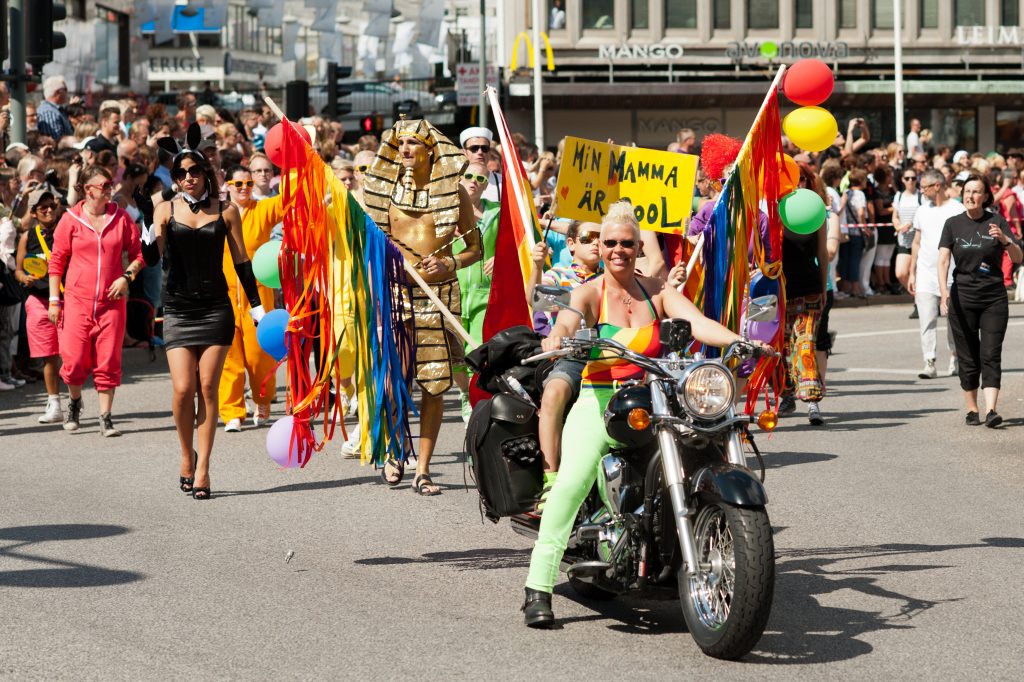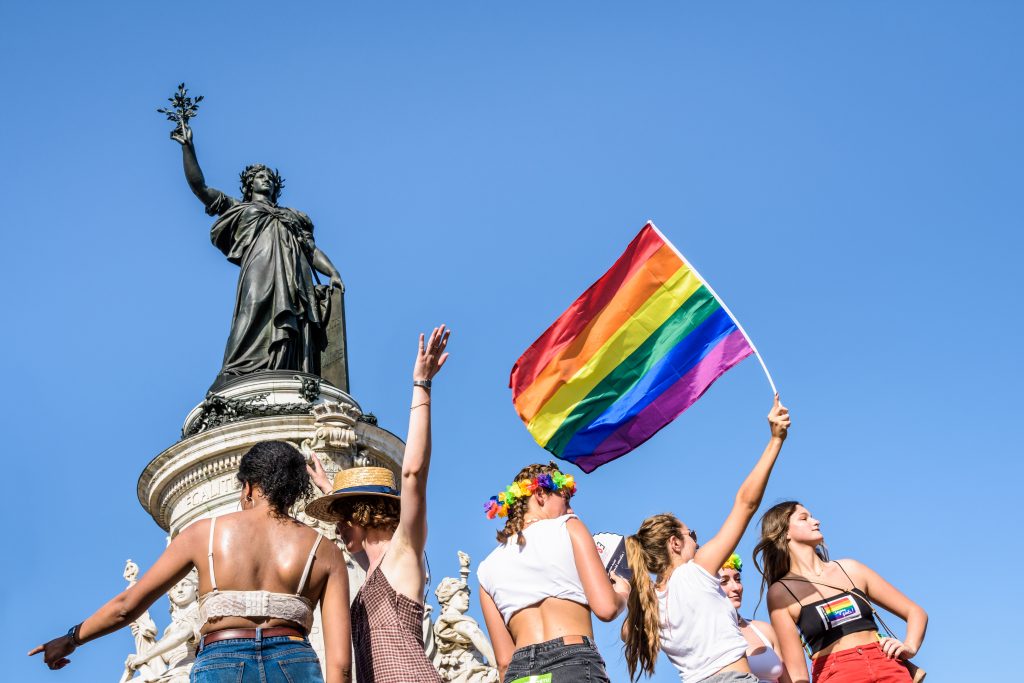The Friendliest Cities Towards The LGBTQIA+ Community
LGBTQIA+ travellers face a lot of safety issues. Top destinations in the world like the Maldives and Malaysia have been deemed dangerous for LGBTQIA+ travel by a journalist Lyric Fergusson who was one of the developers of the LGBTQIA+ Danger Index. The highly researched Index classified 150 countries based on their reception towards the LGBTQIA+ (lesbian, gay, bisexual, transgender and queer, intersex and asexual) community, ranking them from the best to the worst, from the safest to the most dangerous. The list was developed based on parameters like legalisation of same sex marriage, protection against discrimination, worker protection and more.
LGBTQIA+ stands in for a broader more inclusive term, used to describe peoples’ sexual preferences, orientations and habits that are not heteronormative. While the LGBTQIA+ community and their issues have gained considerable support on social media in recent years, the actual on ground reception has been markedly different, with instances of violence a harsh reality for most. There are few to no constitutional rights for the community even in developed countries like the USA. Some cities embrace the LGBTQIA+ community and work towards achieving LGBTQIA+ rights. This disparity makes members of the community consider travel through a lens of caution and concern.
Also read: These Countries Are The Safest For LGBTQ+ Travellers
Top Destinations That Are LGBTQIA+ Community Friendly
1. Gay And Proud: Stockholm, Sweden

Sweden legalised same-sex marriage in 2009. In 2011, the Swedish constitution added the prohibition of any discrimination based on sexual orientation. Stockholm is regarded as an LGBTQIA+ friendly city with Stockholm Pride (July to August), becoming Scandinavia’s biggest Pride festival. It is also treated as one of the most ‘open cities’ in the world because of their inclusive and tolerant behaviour towards the LGBTQIA+ community. Stockholm roads are dotted with the rainbow flag. Södermalm district and Gamla Stan are known for their famous gay bars and clubs like SLM, Patricia, and Guldrummet Sthlm, that have friendly crowds, dance floors, great cocktails and equally fantastic music. The city has three UNESCO World Heritage Sites like the Royal Palace, Skogskyrkogården, and the Birka archeological site. It’s surrounded by water and has 57 bridges that connect the city to 14 islands. It’s not possible to visit the city currently, as the Swedish government has declared a temporary ban on all non-essential travel outside the European Union.
2. Progressive And Inclusive: Toronto, Canada

According to NBC News, Justin Trudeau was the first Canadian Prime Minister who visited a gay bar. He has also taken part in gay Pride marches, but in 2016 became Canada’s first head of the government to participate in the gay Pride march held in Toronto. Canada became the fourth country in the world to legalise same-sex marriage in 2005. They have had laws around anti-discrimination on the basis of sexual orientation as early as the 1990s. The country is LGBTQIA+ friendly with commendable transgender laws too. In 2017, Canada recognised the third gender option officially. There are many safe centres in Toronto including Church-Wellesley Village, also known as Queer West Village. The area is also called the Gay Village, with streets lined with stylish cafes, restaurants, and nightclubs. Some of the most famous gay bars include Crews and Tangos, Beaver where you can catch drag performances, and The Ossington for trivia nights and great DJs. Toronto is also home to LGBTQIA+ community centres like The 519, a city agency determined to spread health and happiness among the LGBTQIA+ community. Currently foreigners cannot travel to Toronto or Canada because of the travel ban enforced due to the outbreak of COVID-19.
3. Gay Capital Of Spain: Madrid, Spain

The LGBTQIA+ community in Madrid is booming with LGBTQIA+ friendly districts full of restaurants, pubs, and shops. Spain legalised homosexuality in 1979, and it has allowed same-sex marriage and same-sex couple adoption since 2005. Transgender people in Spain are permitted to register their preferred gender in official public documents and are allowed to adopt a gender of their choice without undergoing sex reassignment surgery. Smaller cities in Spain like Sitges are also LGBTQIA+ friendly. The Madrid Pride is believed to be one of the biggest gay pride marches in the world. Other LGBTQIA+ events include Gayday Madrid, Lesgaicinemad, and Amor diverso. Malasaña and Chueca barrios or neighborhoods are the most popular destinations for nightlife. Let’s not forget the Spanish love for great food—don’t forget to take your taste buds on a ride in La Latina and Lavapiés. The LGBTQIA+ community makes up 10 per cent of the city’s population. One of the reasons behind it are organisations like Aegal, that strives towards LGBTQIA+ rights and equality. COGAM is another NGO that works towards LGBTQIA+ rights. Currently Spain has opened its doors for tourists or visitors under the EU Schengen zone, and other countries like Australia, Canada, Georgia, Japan, New Zealand, Rwanda, South Korea, Thailand, Tunisia and Uruguay.
4. All SO Queer Friendly: Oslo, Norway
The Nordic country de-criminalized same-sex couples/sexual activity in 1972. Norway also introduced an anti-discrimination based on sexual orientation law in 1981. In 1993 the country permitted same-sex couples to enter into registered partnerships, and in 2009 same-sex marriage was legalised. Since then around 754 registered partnerships chose to marry. Transgender people are allowed to serve in the Norwegian Armed Forces. In 2016, the country allowed people from the LGBTQIA+ community to change their gender legally without any psychological evaluation. Oslo has a vibrant queer culture, and tourist sites there are incredibly inclusive of the LGBTQIA+ community. Events like DRAMAqueen, Fire Oslo, Open Drag Stage, and Score are famous for hosting raucous queer nights. Oslo Pride takes place in June, and the Oslo International Film Festival known for celebrating queer culture with panels expanding conversations about LGBTQIA+ rights takes place from August to September. People reaching Norway from abroad will be quarantined for 10 days except specific countries in Europe. More information can be found here.
5. Not A Calm Seaside City: Brighton, United Kingdom
Also the unofficial gay capital of the United Kingdom, Brighton has been known for its queer culture from the early 1930s. Over the decades it has emerged as a safe space for those who choose not to be defines by heteronormative values. In 2014, it was believed that 11-15 per cent of Brighton’s population of those above 16, identified as being part of the LGBTQIA+ community. The UK has passed laws that were anti-discriminatory in 2004-2008. Another law that is pro LGBTQIA+ community is the right to change your legal gender. This was introduced in 2005. Furthermore, in a landmark move, the UK made it compulsory for all primary schools to teach their students about different kinds of families, including those from the LGBTQIA+ community. London is also a hotspot for gay culture, but Brighton is still considered to be a safe haven for the LGBTQIA+ community. The Brighton Pride, which is held in August, is the largest Pride in the UK. Additionally, there are numerous organisations actively working towards extending support and generating inclusive behaviour. Among them are the Brighton & Hove LGBT Switchboard and the Sussex Beacon. A seaside town, Brighton offers oceanic calm, but also a very wild club culture with a plethora of bars in Kemp Town. Bars like The Queens Arms, The Marlborough, and The Bulldog also host exciting drag performances. The UK also has a list of countries that are exempted from entry, while foreigners from certain countries need to be mandatorily quarantined. Find more information here.
6. Love Is Love in The Romance Capital: Paris, France

Paris is a worldwide famous destination for love and romance, and this stands true even for the LGBTQIA+ community. Homosexuality was legalised in France in 1791. Anti-discrimination laws were introduced from 1982 and have continued till 2012. In 2010, France removed transsexualism from the list of mental illnesses and legalised gay marriage in 2013. Paris has been the centre for queer culture right from La Belle Époque, an era that lasted between 1871 to 1914, when Paris emerged as the epicentre of romance and sexual freedom. Multiple LGBTQIA+ friendly neighbourhoods sprang up during this time. Today Le Marias and Montmartre are the best example of the La Belle Epoque life, and very embracing of the LGBTQIA+ community. With their many cabaret and gay/lesbian bars, cafes, restaurants, and businesses, they are an artistic hub that draw tourists purely for their joie de vivre. Paris Pride is one of the biggest in Europe. Help centres like Paris Île-de-France and Centre Gai et Lesbienne provide help and support in matters of psychological, legal, and physical health. The country has stopped issuing visas currently, so travel is restricted for the time being.
7. Evolving Towards A Progressive World: Lisbon, Portugal
Once the capital of the Portuguese empire, Lisbon is now emerging as one of the coolest gay cities in Europe. They are now attracting the LGBTQIA+ community with the city’s inclusive attitude and policies, despite having stringent Catholic roots. Portugal decriminalised same-sex couples in 1982, and legalised same-sex marriage in 2010. Furthermore, in 2010 the country introduced pro-transgender laws where any individual of 16 years and above can change their gender without a medical report. The main gay neighbourhoods include Barrio Alto and Príncipe Real in Lisbon. Bars like Posh Lisbon, Trumps, the oldest and biggest bar in the city, Bar TR3S, and Finalmente Club have some of the best drag performances in town. The best places to stay at are Baixa, Chiado, Principe Real, and the Alfama and The Late Birds. Lisbon Pride and Lisbon Bear Pride are the main LGBTQIA+ events that take place annually. There are exclusive gay saunas, cruising areas, and a gay beach called Beach 19. Organisations like Centro LGBT, Checkpoint XL, and ILGA Portugal continuously work towards gender equality and human rights and also offer sexual counselling, psychological support, all to help fight against discrimination.
Look Before You Leave
While the above-mentioned places are safe for LGBTQIA+ travellers, there are certain safety measures you must take like every other traveller. While countries might have pro LGBTQIA+ laws it is always important to check how locals feel. We are desperately in need of a world without discrimination, and while the fight continues with small wins, there is a long way to go before the world is considered inclusive.
from Travel.Earth https://ift.tt/31MsNix

0 Comments